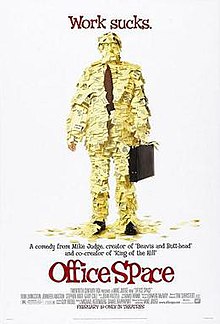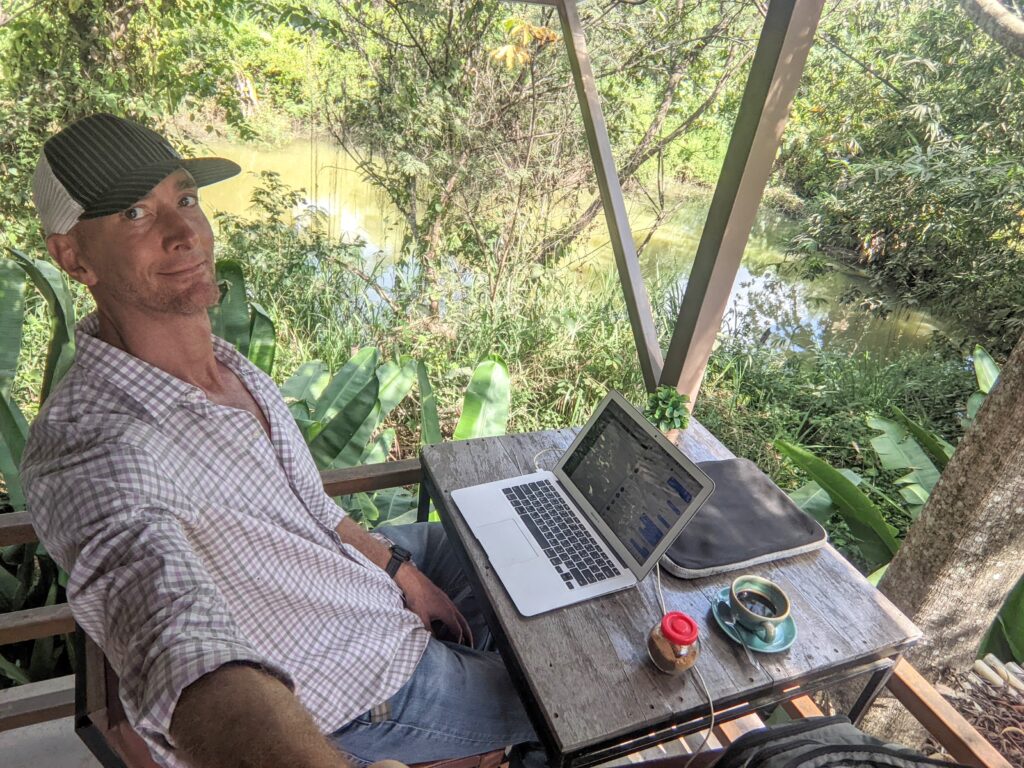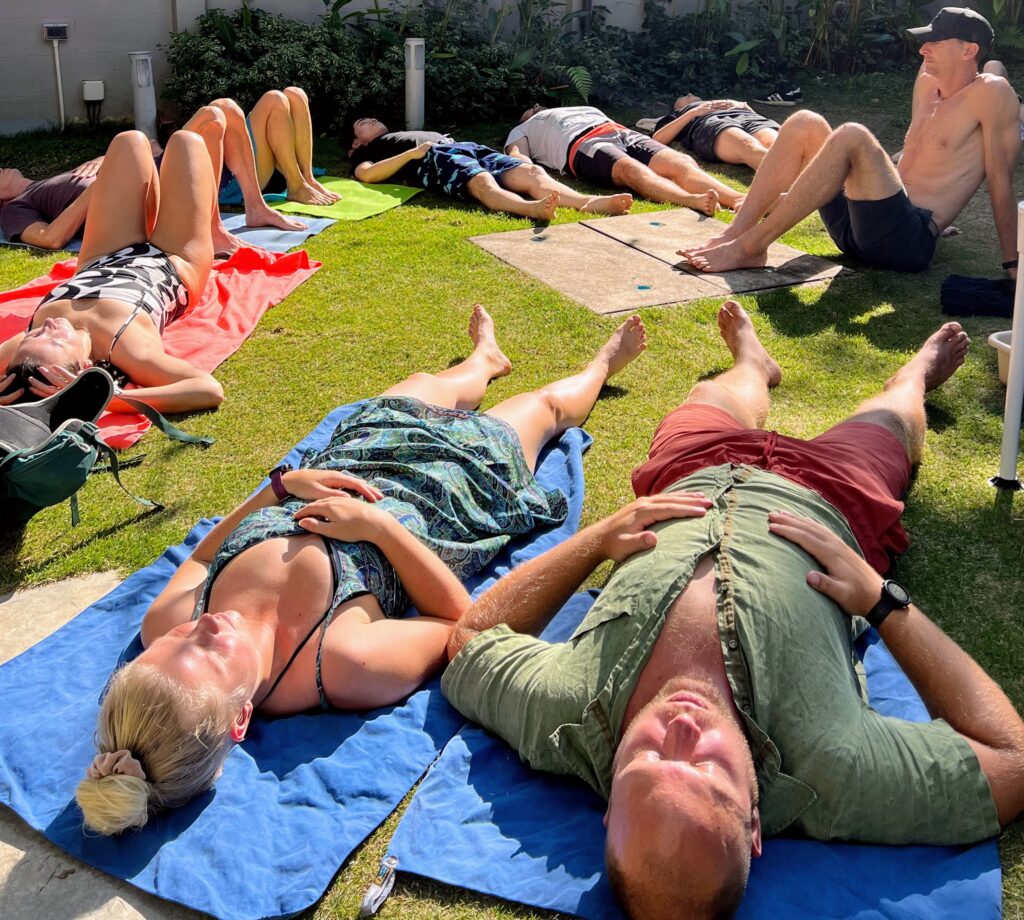Introduction: The Office Space Dilemma
Have you ever felt like you’re living in the movie “Office Space”?

If so, you’re not alone.
Shortly after earning my Computer Science degree, I found myself in a situation eerily reminiscent of that cult classic film:

Locked in a windowless room, surrounded by a maze of cubicles, staring at a computer screen for hours on end.
It didn’t take long for me to realize that this environment was slowly draining my energy, focus, and overall well-being.
This scenario is all too common in today’s corporate world, where traditional wellness programs often fall short of addressing the real needs of employees.
The Reality of Modern Corporate Environments
Today’s office workers face a unique set of challenges:
- Prolonged sitting leading to physical discomfort and health issues
- Constant digital connectivity causing mental fatigue and stress
- Lack of natural light and fresh air affecting mood and sleep patterns
- High-pressure deadlines impacting work-life balance
These factors contribute to what researchers call “workplace burnout,” a phenomenon that’s becoming increasingly prevalent in our always-on corporate culture1.
The Promise of Effective Corporate Wellness Services
But what if there was a way to not just survive, but thrive in the corporate world while prioritizing your health and well-being?
Imagine starting your day feeling energized, maintaining laser-like focus throughout your tasks, and ending your workday with a sense of accomplishment rather than exhaustion.

This isn’t just a pipe dream – it’s achievable through innovative corporate wellness services that go beyond the traditional gym memberships and yearly health screenings.
By incorporating evidence-based practices like breathwork, cold therapy, and strategic movement, companies can create environments that foster both productivity and well-being.
A study published in the Journal of Occupational Health Psychology found that comprehensive wellness programs can lead to a 25% decrease in sick leave absenteeism and a 32% decrease in workers compensation and disability claims2.
These numbers aren’t just good for employees – they translate to significant cost savings and productivity boosts for employers as well.
In the following sections, we’ll explore how to revolutionize corporate wellness, addressing both the needs of employees seeking to boost their energy, focus, and overall health, and employers looking to implement effective corporate wellness services.
We’ll dive into practical techniques you can start using today, backed by science and proven effective in real-world corporate settings.
Whether you’re an office worker feeling stuck in a rut, or an employer seeking to create a more vibrant, productive workplace, this guide will provide you with the tools to transform your approach to corporate wellness.
Let’s begin by examining the current state of corporate wellness programs and why a new approach is desperately needed.
The Current State of Corporate Wellness: A Broken System
As we delve into the world of corporate wellness services, it’s crucial to understand why many current programs fail to deliver on their promises.
Despite good intentions, many workplace wellness initiatives fall short of creating lasting change in employees’ lives.
Let’s examine the common pitfalls and why a fresh approach is desperately needed.
The Shortcomings of Traditional Wellness Programs
Traditional corporate wellness services often focus on surface-level interventions that fail to address the root causes of workplace stress and poor health:
- Annual health screenings: While these can catch potential issues, they do little to promote day-to-day wellness.
- Gym memberships: Offering access to fitness facilities is great, but it doesn’t help employees who struggle to find time or motivation to use them.
- Sporadic wellness challenges: These can be fun but rarely lead to lasting habit changes.
- Generic health advice: One-size-fits-all recommendations often fail to resonate with individual needs and preferences.
These approaches, while well-intentioned, often fail to engage employees or create meaningful change in their daily lives.
The Real Costs: Burnout, Low Productivity, and High Turnover
The consequences of ineffective wellness programs extend far beyond wasted resources:
- Employee burnout: A Gallup study found that 23% of employees reported feeling burned out at work very often or always, with an additional 44% feeling burned out sometimes1.
- Decreased productivity: The American Institute of Stress reports that job stress costs U.S. industry more than $300 billion annually in absenteeism, turnover, diminished productivity, and medical, legal, and insurance costs2.
- High turnover: According to a survey by Monster.com, 95% of workers are considering changing jobs, with many citing burnout as a primary reason3.

These statistics paint a grim picture of the current state of workplace wellness and its impact on both employees and employers.
Why Traditional Solutions Fall Short
There are several reasons why many corporate wellness services fail to achieve their intended goals:
- Lack of personalization: Generic programs don’t account for individual needs, preferences, or health conditions.
- Poor engagement: Many employees view wellness programs as just another corporate initiative, rather than something valuable for their personal well-being.
- Failure to address root causes: Surface-level interventions don’t tackle the underlying issues causing stress and poor health in the workplace.
- Disconnect from daily work life: Many wellness programs feel separate from employees’ day-to-day experiences, making it difficult to integrate healthy habits into their routines.
- Lack of leadership support: When company leaders don’t prioritize or participate in wellness initiatives, it sends a mixed message about their importance.
A study published in the Journal of Occupational and Environmental Medicine found that only 13% of employees participate in wellness programs, even when they’re offered4.
This low engagement rate suggests that current approaches are missing the mark in addressing employees’ real needs and motivations.
The Need for a Paradigm Shift
It’s clear that a new approach to corporate wellness services is needed – one that addresses the root causes of workplace stress and poor health, engages employees in meaningful ways, and integrates seamlessly into their daily lives.
By focusing on evidence-based practices that boost energy, enhance focus, and promote overall well-being, we can create wellness programs that truly make a difference.
In the next section, we’ll explore the root causes of workplace wellness issues, setting the stage for innovative solutions that can transform both individual health and corporate culture.
Root Causes: Why We’re Struggling
To revolutionize corporate wellness services, we must first understand the underlying factors contributing to poor health and low energy in the workplace.
By identifying these root causes, we can develop targeted strategies that address the core issues affecting employee well-being and productivity.
Let’s dive into the key factors that are often overlooked in traditional wellness programs.
The Sedentary Lifestyle Epidemic
One of the most significant challenges facing modern office workers is the prevalence of sedentary behavior.
The average office worker spends a staggering 10 hours per day sitting, which has been linked to numerous health issues1.
This prolonged sitting can lead to:
- Increased risk of cardiovascular disease: A study published in the European Heart Journal found that excessive sitting time was associated with a 147% increase in cardiovascular events2.
- Musculoskeletal problems: Prolonged sitting can cause chronic back pain, neck strain, and other musculoskeletal issues3.
- Metabolic disruption: Sedentary behavior has been linked to insulin resistance and an increased risk of type 2 diabetes4.
The impact of this sedentary lifestyle extends beyond physical health, affecting energy levels, mood, and cognitive function throughout the workday.
Chronic Stress: The Silent Productivity Killer
In today’s fast-paced work environment, chronic stress has become a pervasive issue that many corporate wellness services fail to adequately address.
The American Psychological Association reports that 79% of employees experience work-related stress5.
This ongoing stress can lead to:
- Decreased cognitive function: Chronic stress impairs memory, decision-making, and problem-solving abilities6.
- Lowered immune function: Prolonged stress suppresses the immune system, leading to increased susceptibility to illness7.
- Emotional exhaustion: Persistent stress can result in burnout, characterized by emotional exhaustion, cynicism, and reduced professional efficacy8.
The cumulative effect of chronic stress not only impacts individual well-being but also significantly reduces productivity and increases absenteeism.
Disconnection from Natural Rhythms and Environments
Modern office environments often isolate workers from natural light and outdoor spaces, disrupting our innate biological rhythms.
This disconnection from nature can have profound effects on our health and well-being:
- Circadian rhythm disruption: Lack of natural light exposure can disrupt our sleep-wake cycles, leading to insomnia and daytime fatigue9.
- Vitamin D deficiency: Indoor work environments can contribute to vitamin D deficiency, which is linked to various health issues including depression and weakened immune function10.
- Reduced cognitive function: Studies have shown that exposure to natural environments can improve attention and cognitive performance11.
Incorporating elements of nature and natural light into the workplace can significantly boost mood, energy, and productivity.
Overreliance on Technology: The Double-Edged Sword
While technology has revolutionized the way we work, it also presents unique challenges to our well-being:
- Digital eye strain: Prolonged screen time can lead to eye fatigue, headaches, and blurred vision12.
- Disrupted sleep patterns: Blue light emitted by screens can interfere with melatonin production, affecting sleep quality13.
- Increased stress and anxiety: Constant connectivity can lead to information overload and difficulty disconnecting from work14.

Balancing the benefits of technology with strategies to mitigate its negative impacts is crucial for effective corporate wellness services.
The Mind-Body Disconnect
Many traditional wellness programs focus solely on physical health, overlooking the crucial mind-body connection.
This disconnect can manifest in various ways:
- Ignoring stress signals: Employees may push through stress and fatigue, ignoring their body’s signals for rest and recovery.
- Emotional eating: Workplace stress can lead to poor dietary choices, further impacting energy levels and overall health15.
- Neglecting mental health: The stigma around mental health in the workplace can prevent employees from seeking help when needed.
Addressing the mind-body connection is essential for creating truly effective corporate wellness services.
By understanding these root causes, we can begin to develop more comprehensive and effective approaches to workplace wellness.
In the next section, we’ll explore my personal journey from a stressed-out office worker to a wellness advocate, providing insights into practical strategies that can transform your work life.





Jason,
I really enjoyed your post. I have been working on perfecting light therapy and helping companies install it into their culture for years. I would enjoy talking to you about how we might work together. Thank you again for a great post!! David Martin the creator of the Light Pod L3 Please reach out to me call or text me 720-577-1329
Thanks for the message, David. I remember doing a talk for the Light Lounge a few years ago on the amazing benefits of fasting.
I'm looking forward to catching up!